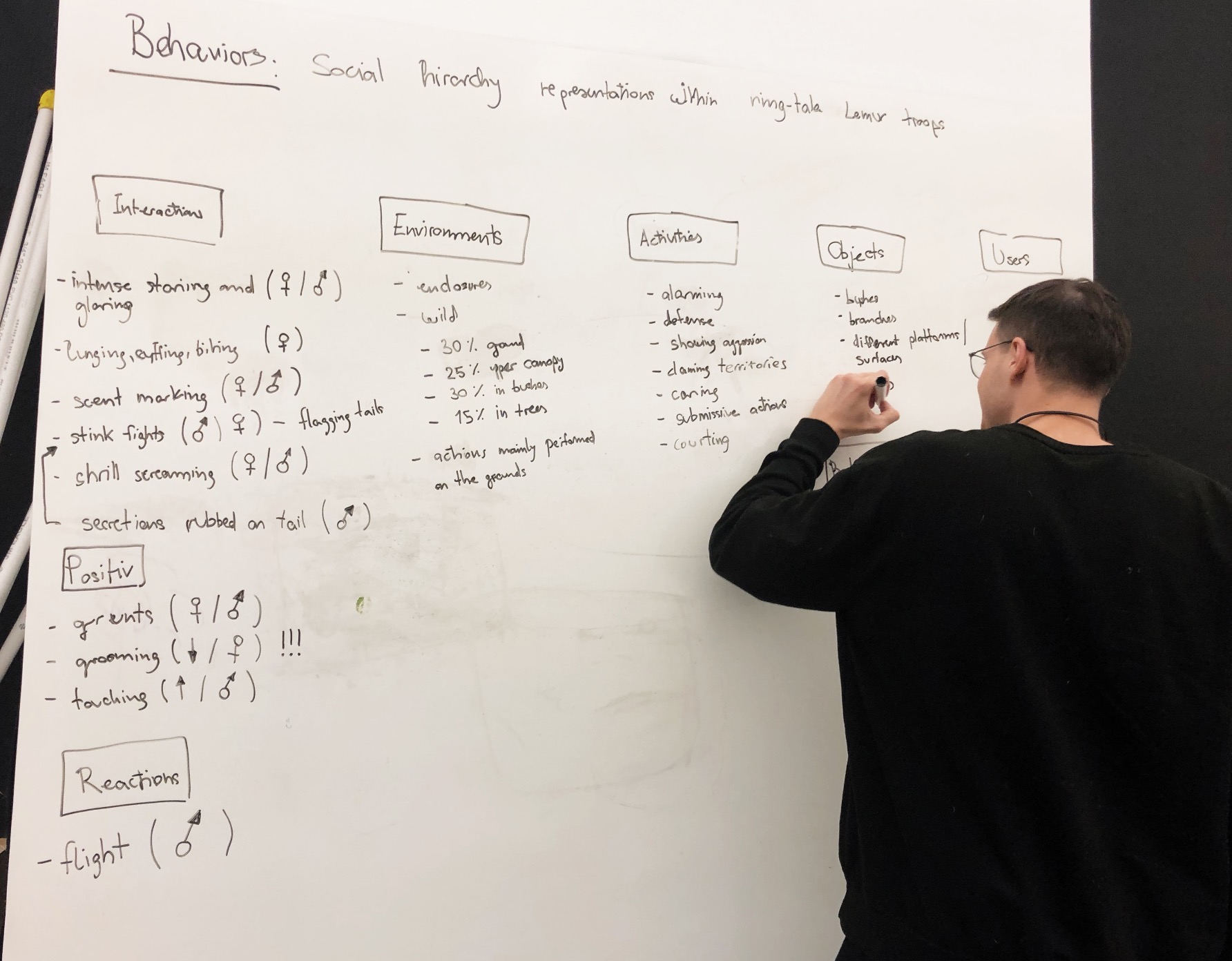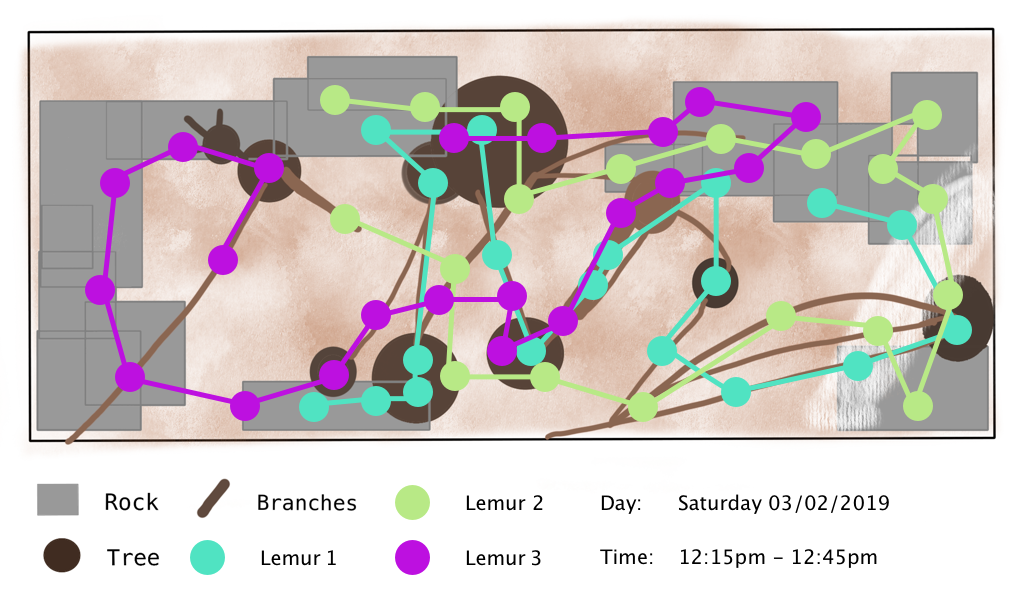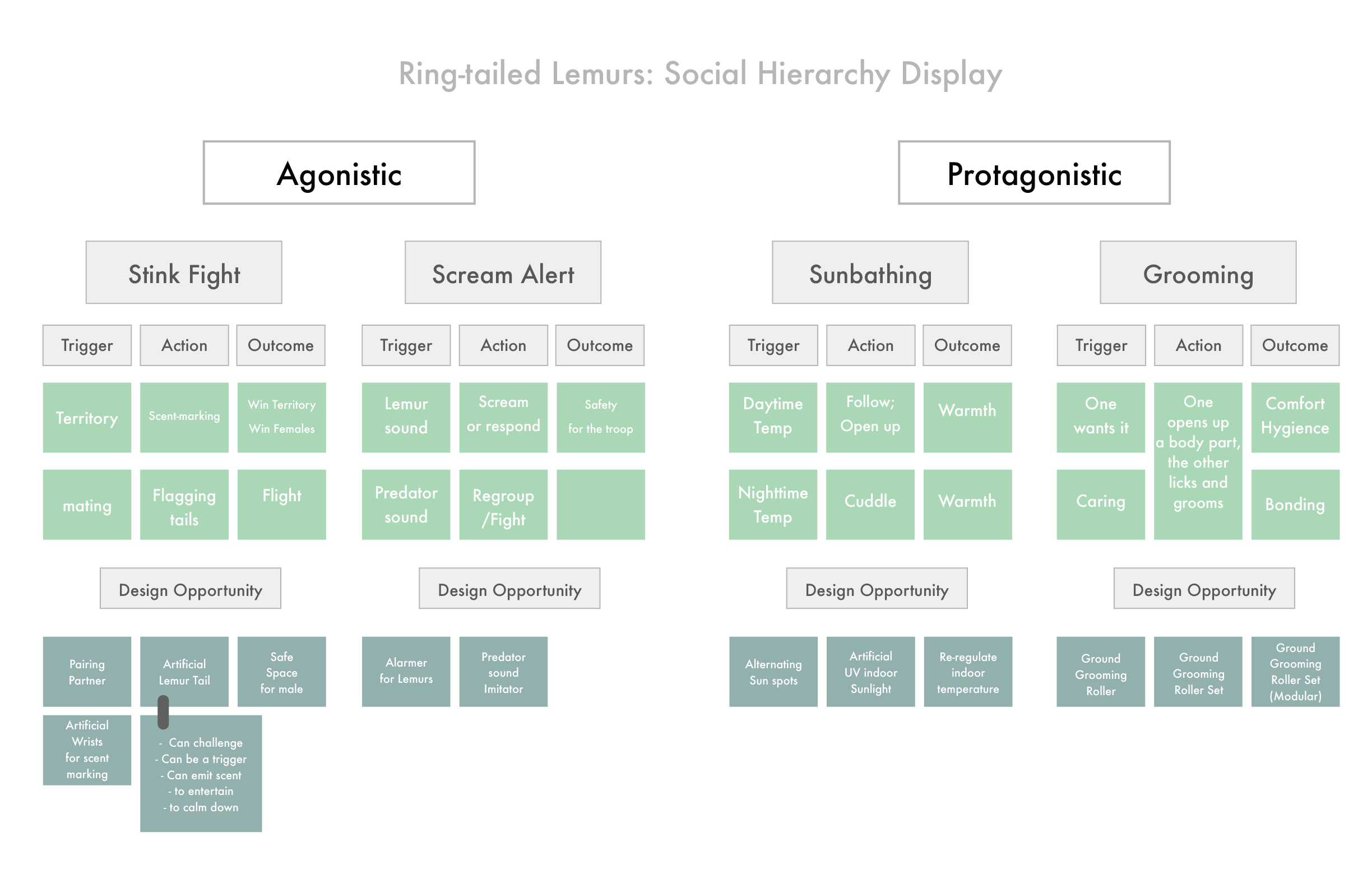
Assignment 5: Design Methods - Midterm
07 March 2019
Assignment
For this assignment, my partner and I were supposed to use three design methods to explore how and what to design for an urban or wild animal of our choice, and to achieve the ultimate goal of creating an enriched dialogue with that animal. We used the AEIOU (Activities, Environments, Interactions, Objects) design method and Behavioral Mappings to lay down observations, chart, reflect and find any gaps and design opportunities for our animal. Later on, we used the Brainstorming Tree design method to find new means of technological intervention for enrichment and dialog.
Set-Up
My partner and I decided to move forward with Ring-tailed Lemurs who we still highly admire of their intelligence and intricate norms. Based on our knowledge and research from previous Enrichment projects, we wanted to dive deeper into Ring-tailed Lemurs’ behaviors that are beyond basic feeding and resting. Ring-tailed lemurs are highly sociable animals, and they demonstrate a complex communication system within their social groups. They travel and live in a group setting–so called lemur troops. Ring-tailed lemur troops are always female-dominant, and gender-based or age-based social behaviors emerge and display variously around that central theme. We were very intrigued by such a system and how it affected everything they do, so we agreed to explore further and ask more “why” on Ring-tailed Lemurs’ social hierarchy behaviors. In terms of creating a dialogue with Ring-tailed Lemur within that topic, we weren't sure about what exactly we could design as an outcome, but we tried to keep our thoughts flowing and options open. We wanted to use these three design methods step by step, to collect insights and vantage points on Ring-tailed Lemurs, leading us to interesting interventions that would create a dialogue with Ring-tailed Lemurs.

AEIOU (Activities, Environments, Interactions, Objects)

A_ Activities
- Alarming
- Defense
- Showing aggression
- Claiming territories
- Caring
- Submissive actions
- Courting
E_ Environments
- Enclosure (Captivated)
- Wild
- Ground (30%)
- Mid-Up canopy (25%)
- In bushes (30%)
- In trees (15%)
I_ Interactions (Antagonistic)
- Intense staring and grooming (m/f)
- Lunging, Biting, Cuffing (m/f)
- Scent marking (m/f)
- Flagging tails (m)
- Secretion rubbed on tails (m)
- Shrill screaming (m/f)
- Flight (m)
I_ Interactions (Protagonistic)
- Grunts (m/f)
- Grooming (m/f)
- Touching (m/f)
O_ Objects
- Bushes
- Branches
- Trees
- Different platforms and surfaces
- ropes
- Comb-shaped teeth for grooming purposes
- Tails
- Scent glances on wrist (m)
- hands
- feet
Behavirol Mapping

Brainstorming Tree

Conclusion
Ring-tailed lemurs are very social. Within their troops, their behaviors are highly rank-based and gender-based. We try not to neglect the behavioral differences that different gender of lemurs would display, and in other words, we try to zoom into these differences as they are relevant to everything they do. In our brainstorming session, we started with listing every interaction we discovered in our “AEIOU” exercise. Then we re-organized our chart and thought flow to a pragamtic format. Creating dialogues needs to happen at the right timing when their natural instincts fit in and behavioral displays make sense. We decided to categorize their behavioral process into different steps – Trigger, Action and Outcome – in order to make sure we find the right gap among these specific behaviors. We ended up analyzing four behaviors that are only unique to lemurs.